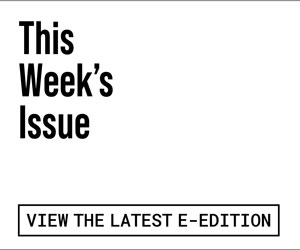In the early 1960s, when the University of California decided to establish a new campus in Santa Cruz, the 13th employee it hired—right alongside the campus engineer and its principal architect—was a historian.
Elizabeth Spedding Calciano was brought in to lead the Regional History Project as part of UCSC’s nascent library system. From the beginning, her job was to establish an oral history of not only the founding of the new campus, but the Monterey Bay communities that surrounded it.
That kind of fundamental commitment to history as it unfolds has now borne fruit in the form of a remarkable two-volume oral history titled Seeds of Something Different, a detailed and diverse account of UCSC’s ongoing 50-plus-year story, told by those who lived it.
The twin volumes—each featuring a landscape photograph of the campus by Ansel Adams—is the work of a trio of historians including Irene Reti, Cameron Vanderscoff, and Sarah Rabkin. Included are verbatim anecdotes, descriptions, and accounts from more than 200 people—students, faculty, administrators, artists, activists, and townspeople, all chronicling the last half-century (and more) of Santa Cruz and its idiosyncratic, ever-evolving namesake university.
“It’s a complicated book,” says Reti, a UCSC alum who still works as an oral historian at the university. “That’s why it’s 925 pages.”
Seeds will remain for years to come the go-to source on the cherished story of UCSC’s founding and its pioneering class. But Reti says it was important for the book to be more than that well-known origin story.
“We felt it was important that we not fall into the trap of only enshrining those first years.”
As a result, Seeds traces a complex story from the university’s unlikely journey from an almost utopian teaching-based college to a science-oriented research university, and the winding, often contentious journey it took to get there.
Still, the early chapters of the first volume are dominated by the staggering task of building a UC campus on ranch land outside Santa Cruz, the dream project of two men, UC president Clark Kerr and his old grad-school roommate Dean McHenry, who would go on to be the new university’s first chancellor.
Reacting to a growing sense that higher education was getting larger and more impersonal, the new campus was to be designed as a reflection of the Oxford model, small “colleges” within a single university framework, to create a more intimate and immediate educational experience. McHenry especially, says Reti, “had a strong interest in utopian movements, and was very much a product of the progressive 1930s and ’40s.”
Bringing this model to life fell largely to former UCLA historian Page Smith, the initial college’s first provost, a man who embodied both radical ideas and traditionalist notions about education. Smith—who came up with the narrative evaluations of students in lieu of letter grades, another distinct quirk of UCSC—was, says Reti, “this imposing Western cowboy intellectual.”
However progressive his ideas about education, Smith was not a figure of the 1960s counterculture. Despite a widespread stereotype that the university brought the hippie movement to Santa Cruz, Reti says that the counterculture caught UCSC as off-guard as it did the town itself.
“Both [Smith] and Dean McHenry were concerned about the image of the campus, and the community was horrified. The university students looked a lot different [when the university first opened] than they did just five years later when the counterculture took hold. Smith was caught in this bind—and McHenry, too—of wanting innovation, but not that much innovation.”
The book also tells the story of the many subcultures and academic interests that developed in the university’s first couple of decades, from the anti-war movement, to the development of the arts, to the growing power of feminist consciousness on campus. The two volumes contain more than 250 photographs of this rich history, from images of dorm life, protests and demonstrations, and formal ceremonies (including a shot of revolutionary Huey Newton receiving his Ph.D.)
The book also has its share of campus celebrities, some of the most influential faculty associated with the university, from Alan Chadwick, an innovator in gardening who established UCSC as an enormous influence in the organic-gardening movement, to William Everson, the master printer and poet who served as a kind of high priest of the Santa Cruz back-to-the-land aesthetic.
As years went by, the university’s form—the college system, narrative evaluations—remained constant while its mission was entirely re-engineered, largely by Robert Sinsheimer, who served as chancellor from 1977-1987. Sinsheimer himself was a pioneering biologist in the study of genetics and DNA, and as chancellor he laid the groundwork for UCSC to be a significant player in the development of the Human Genome Project years later.
“One of the great paradoxes of UCSC,” says Reti, “is that it was originally intended to emphasize the liberal arts. But with the arrival of (biologist and Crown College provost) Kenneth Thimann, it became a prestigious science campus, which continues to the present day.”
Woven throughout both volumes, however, is the ever-dynamic relationship between the university and the Santa Cruz community, particularly when it comes to the university’s growth, and its continuing influence on the town’s political, economic, and cultural personality. (The book’s most recent interviews were from 2019, so Covid-19 and the 2020 fires will have to wait for Volume 3).
“I really believe that the campus and the community have created each other,” says Reti. “We’re absolutely entwined at this point. Anyone who lives in Santa Cruz is impacted by the university, and the entire culture of Santa Cruz changed with the coming of the university. This is definitely a story for all of us locals, as well as for anyone interested in history in general, of the counterculture, of higher education, or California.”













